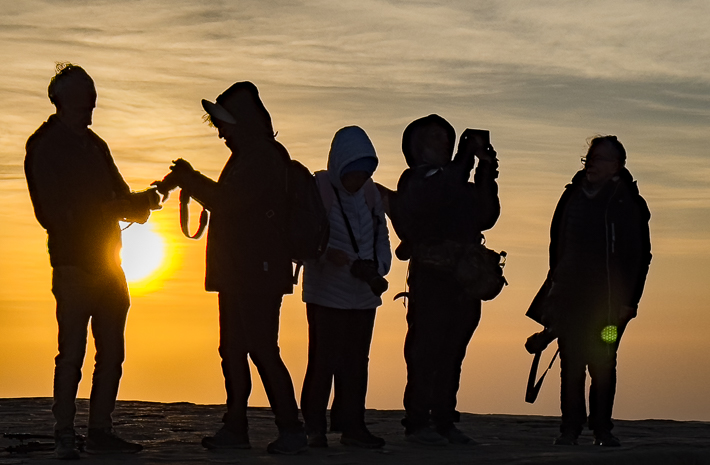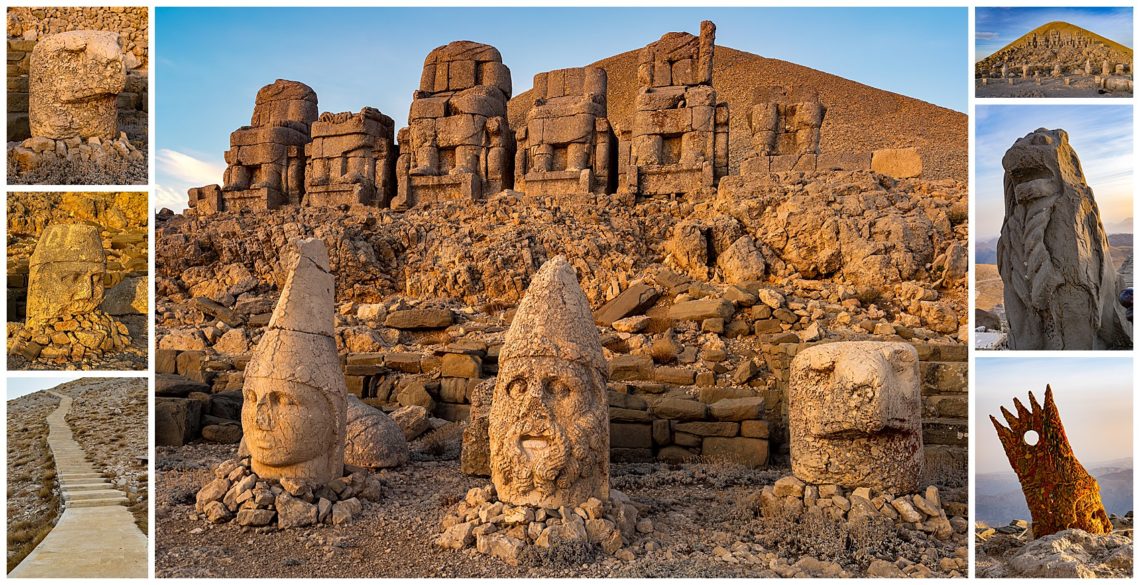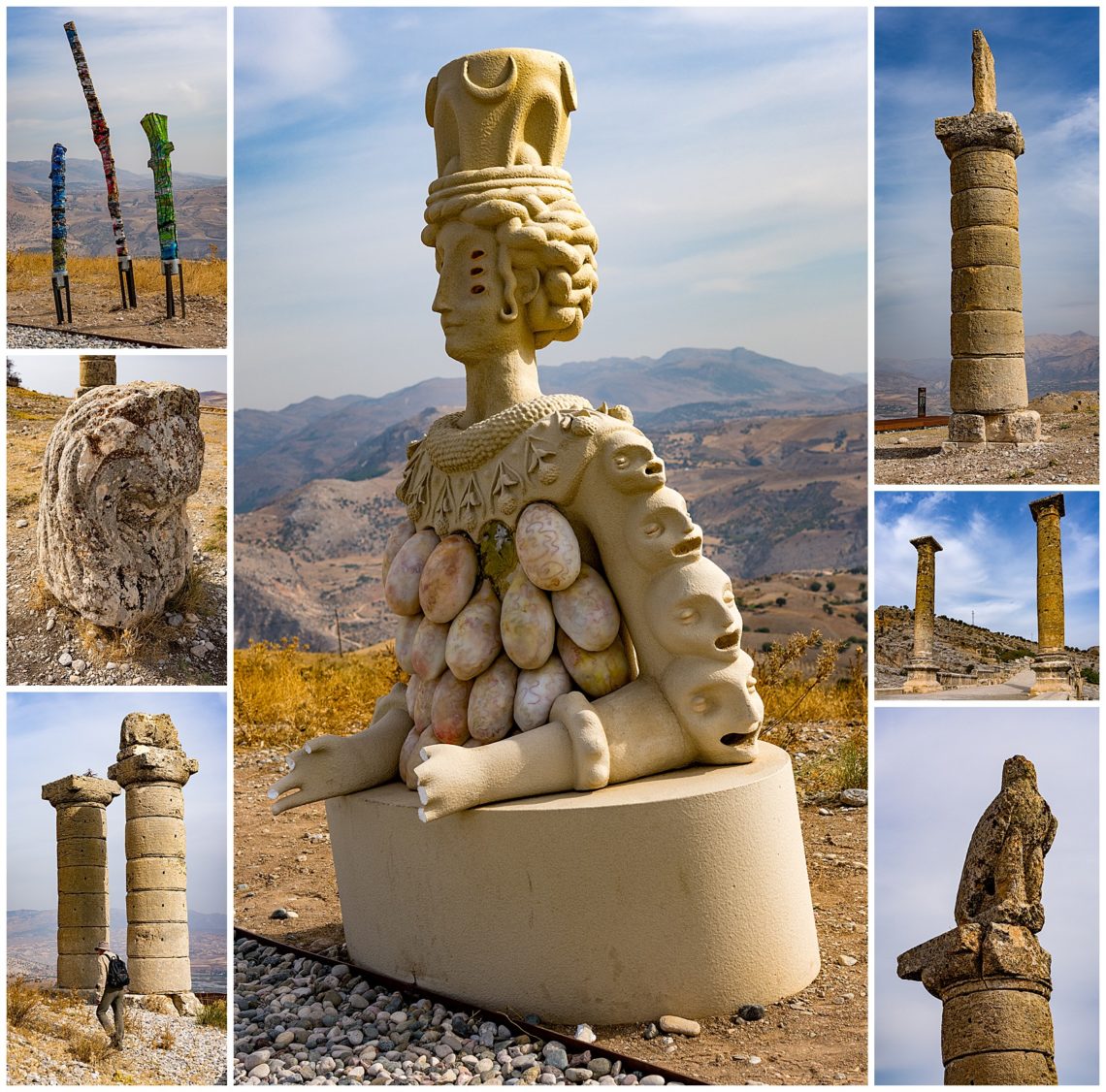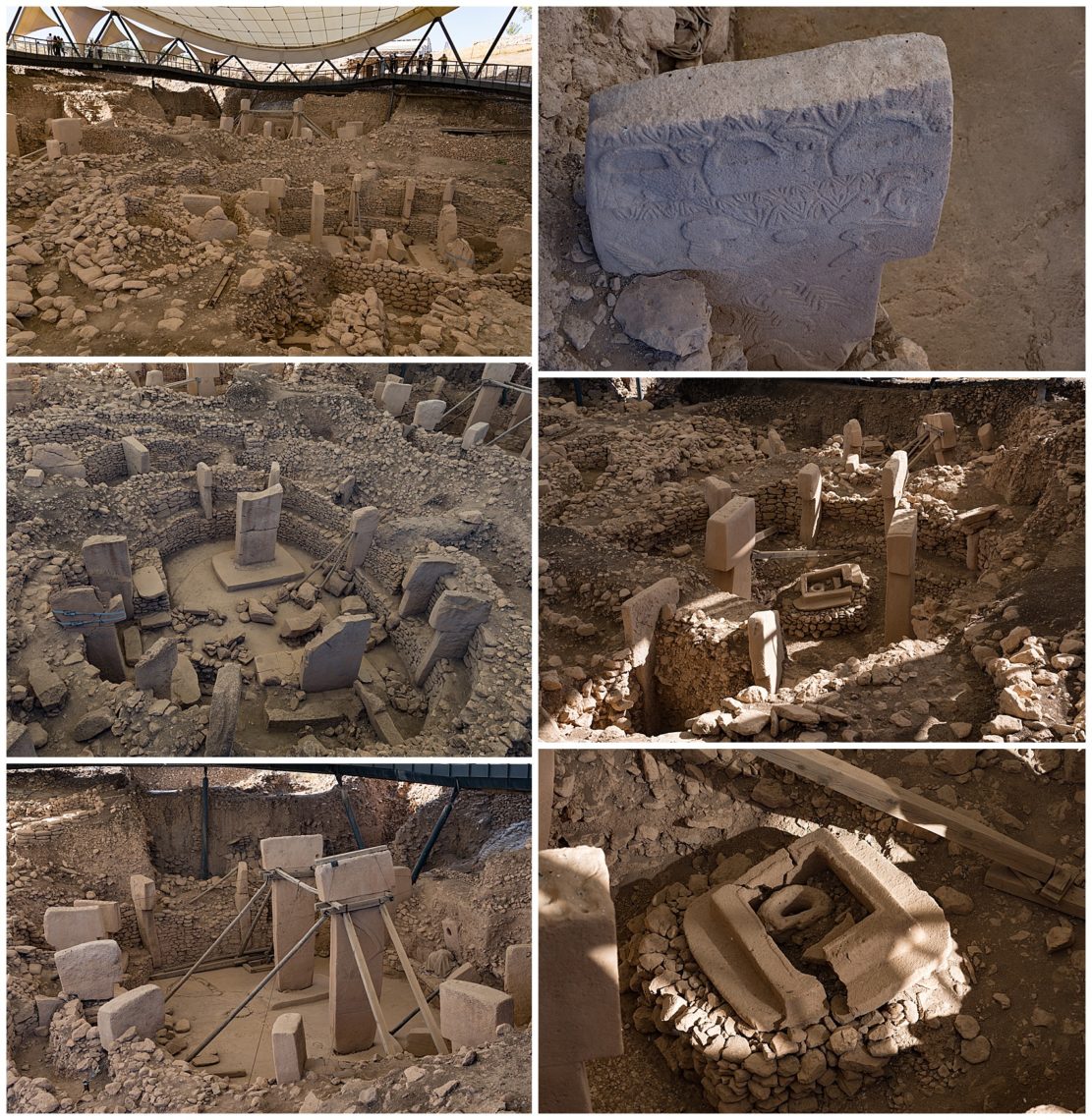
We left our hotel in Aidiyaman by 2:00 AM to climb Mount Nemrut to see the sunrise. Mount Nemrut is 7000 feet high and was designated a World Cultural Heritage site in 1987. The site is covered with statues of the gods, and some consider this site as the 8th Wonder of the World. When the sun rose, the light was breath taking and only lasted for less than an hour.
Crowning one of the highest peaks of the Eastern Taurus mountain range in south-east Turkey, Nemrut Dağ is the Hierotheseion temple-tomb and house of the gods, built by the late Hellenistic King Antiochos I of Commagene (69-34 B.C.). He built this as a monument to himself, placing his statue along with the other gods.
The path up to the top is now paved, with the exception of a very steep part near the top, so we walked up along with hundreds of other tourists. 100,000 people climb Mount Nemrut each year. SE Turkey is one of the best places to learn the history of human civilization, and Mount Nemrut, built in the 1st Century BC, is considered one of the world’s most important historical and cultural heritage sites. It is still a mystery how the carved stones were carried up to the top. Several members in our photo group are shown above sunrise.

After sunrise, the hundreds of tourists leave, and we can enjoy the giant statues photographing the statues of the temple tomb by ourselves. The statues are part of an open air temple with statues on the East and West Terraces located on either side of a tumulus, supposedly the burial mound for King Antiochus. Mount Nemrut is located on the highest peak of the Mesopotamia and is known to contain the tombs of the King Antiochus I of Commagene.
The pattern of damage done to the heads, notably the noses, suggest the destruction was intentional by iconoclasts. However, these are theories only.
The archaeological and UNESCO World Cultural Heritage site on Mount Nemrut, towering at a height of 2,150 meters (about 7,050 feet), survived the earthquakes undamaged. Footage captured by Anadolu showed the massive heads, each of weighs tons, on the eastern face of the mountain in Adiyaman province.

On the way back to Aidiyaman, the administrative capital of this region, we explored Karakus, a funery monument, (a Royal Mausoleum) which is believed to be a burial mound for Queen Isias and Princess Antiochis and Aka 1 of Commagene, wife and sister of King Antiochus. Karakas means black bird, which is the eagle on the column (right bottom). The tumulus is decorated with pillars with eagles, bulls and hand shake scene representing King Antiouchus, and well as the mother of fertility.

Our next stop was to Gobeklitepe, considered one of the most important archaeological findings of all time, until Karanhantepe was discovered(prior blog). Gobelklitepe is now considered the sister city to the oldest archaeological site in the world, built some 11,000 years ago, both built by the same mysterious civilization. Karanhantepe is older by 1,000 years.
Gobeklitepe has circular temples with T shape pillars decorated with carvings representing foxes, boars, vultures, cranes, snakes, ducks etc build around 10.000 BC. This is the oldest known significant site created by humans. Its purpose is still undetermined, but Stone Age masons created 20 circles of tall rock pillars weighing up to 20 tons.